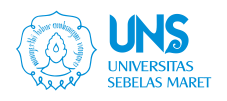DEVELOPMENT OF A THREE-TIER MULTIPLE-CHOICE INSTRUMENT TO MEASURE THE UNDERSTANDING OF SCIENCE AND MATHEMATICS IN BUFFER SOLUTION MATERIALS
Abstract
Keywords
Full Text:
PDFReferences
Alighiri, D., & Drastisianti, A. (2018). Pemahaman Konsep Siswa Materi Larutan Penyangga Dalam Pembelajaran Multiple Representasi. Pemahaman Konsep Siswa Materi Larutan Penyangga Dalam Pembelajaran Multiple Representasi, 12(2), 2192–2200.
Boone, W. J., Staver, J. R., & Yale, M. S. (2014). Rasch Analysis In The Human Science.
Fitriani, D., Kaniawati, I., & Suwarma, I. R. (2017). Pengaruh Pembelajaran Berbasis Stem (Science, Technology, Engineering, And Mathematics) Pada Konsep Tekanan Hidrostatis Terhadap Causal Reasoning Siswa Smp. Vi, Snf2017-Eer-47-Snf2017-Eer-52. Https://Doi.Org/10.21009/03.Snf20 17.01.Eer.08
Hake, R. R. (2019). Analyzing Change/Gain Scores. Edukimia, 1(1), 16–22. Https://Doi.Org/10.24036/Ekj.V1.I1 .A10
Lestari, D. A. B., Astuti, B., & Darsono, T. (2018). Implementasi Lks Dengan Pendekatan Stem (Science, Technology, Engineering, And Mathematics) Untuk Meningkatkan Kemampuan Berpikir Kritis Siswa. Jurnal Pendidikan Fisika Dan Teknologi, 4(2), 202. Https://Doi.Org/10.29303/Jpft.V4i2 .809
Lubis, I. R., & Ikhsan, J. (2015). Pengembangan Media Pembelajaran Kimia Berbasis Android Untuk Meningkatkan Motivasi Belajar Dan Prestasi Kognitif Peserta Didik Sma. Jurnal Inovasi Pendidikan Ipa, 1(2), 191. Https://Doi.Org/10.21831/Jipi.V1i2 .7504
Murnawianto, S., Sarwanto, S., & Rahardjo, S. B. (2017). StemBased Science Learning In Junior High School: Potency For Training Students’ Thinking Skill. Pancaran Pendidikan, 6(4), 69–80. Https://Doi.Org/10.25037/Pancara n.V6i4.86
Redhana, I. W. (2019). Mengembangkan Keterampilan Abad Ke-21 Dalam Pembelajaran Kimia. Jurnal Inovasi Pendidikan Kimia, 13(1).
Rosidah, F. E., & Sunarti, T. (2017). Pengembangan Tes Literasi Sains Pada Materi Kalor Di Sma Negeri 5 Surabaya. Inovasi Pendidikan Fisika, 6(3), 250–257.
Savira, I., & Wardani, S. (2019). Desain Instrumen Tes Three Tiers Multiple Choice Untuk Analisis Miskonsepsi Siswa Terkait Larutan Penyangga. Jurnal Inovasi Pendidikan Kimia, 13(1).
Widhiarso, W., & Sumintonoo, B. (2015). Aplikasi Pemodelan Rasch Pada Assessment Pendidikan (Bambang Trim (Ed.); 1st Ed.). Trim Komunikata.
Refbacks
- There are currently no refbacks.

